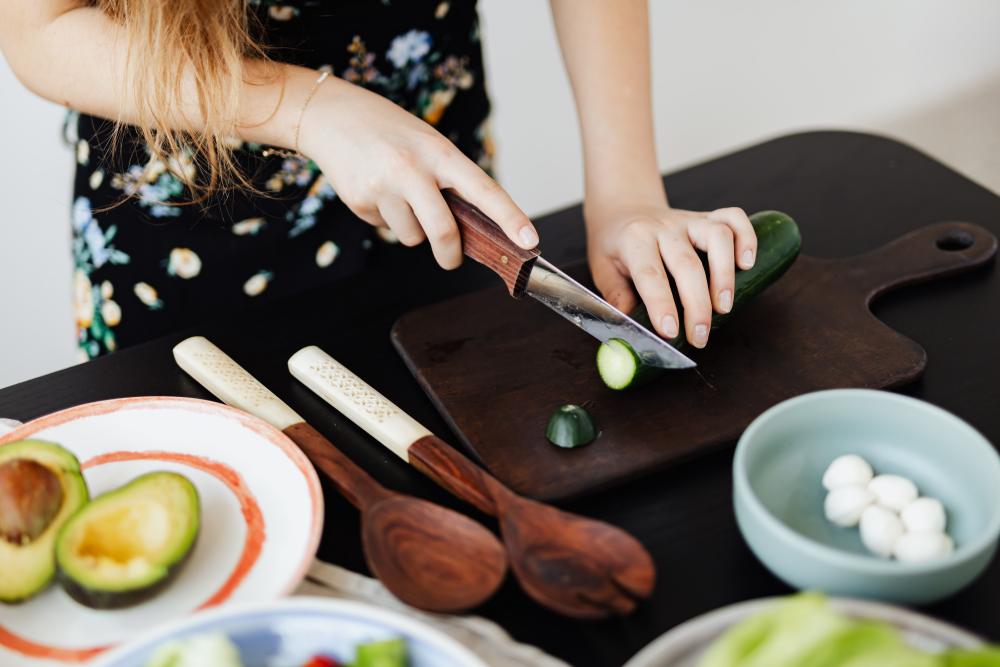Struggling with what you could possibly eat while being on a keto diet without spending hours in the kitchen? To many beginners, keto sounds like a complete life change; no bread or rice, no sugar… so now what?
Suddenly, grocery shopping takes twice as long, every recipe feels too complicated, and your familiar meals are off the table. Besides an extensive grit and willpower, clarity on what to eat and convenience on how to prepare the meals contribute to a successful diet as well.
That said, most of the individuals also leave their keto journey midway, not because it is hard to follow, but because of the complexity of the meals.
Are you also on the keto diet or thinking of taking the path?
Read the complete article and explore a few of the quick and easy meal options and tips that make your keto diet a bit stress-free. So, keep reading!
1. Understand What Keto Really Means
The ketogenic diet is built on a simple principle: train your body to burn fat instead of carbs. To do that, your meals must be high in fat, moderate in protein, and low in carbohydrates.
This encourages a metabolic state called ketosis, where fat becomes the body’s main energy source. It sounds straightforward, but in a fast-moving city like Hong Kong, meal planning and cooking can be a challenge.
That’s why many people explore services that offer diverse keto meals Hong Kong residents can rely on. These solutions save time, reduce guesswork, and ensure nutritional balance.
They also make it easier to stay consistent, something beginners often struggle with. Whether you cook at home or explore prepared options, understanding your macros is the first step to success.
2. Stock the Right Ingredients for Speedy Keto Meals
Having the right ingredients on hand saves time and effort. A well-stocked keto kitchen should always include fresh proteins like chicken, ground beef, tofu, or fish.
For fats, think coconut oil, butter, ghee, and nuts. Keep low-carb vegetables such as cauliflower, broccoli, and kale ready in the fridge. Eggs are a must; they’re versatile, affordable, and quick to cook.
You should also include flavor boosters like garlic, mustard, chili flakes, and lemon juice. These add variety without carbs. Buying in bulk and prepping ingredients ahead of time makes daily cooking easier.
When you already have keto-friendly staples, you’re less tempted to reach for high-carb snacks or processed meals.
3. Initially Start with Easy and Go-To Meal Ideas
Simplicity is your best friend when starting keto. You don’t need complex recipes or unfamiliar ingredients.
Start with basic meals like scrambled eggs with spinach, chicken salad with avocado, or stir-fried tofu with vegetables. Try cauliflower rice with sautéed mushrooms and herbs.
Zucchini noodles with a creamy sauce can be filling and flavorful. Snack on boiled eggs, cheese cubes, or mixed seeds. These quick combinations don’t take much time but keep you full and energized.
Once you have a few go-to meals you enjoy, the rest becomes much smoother. Rotating five to seven reliable dishes is enough to stay consistent and avoid decision fatigue.
4. Meal Prep to Stay on Track
One of the biggest keto challenges is last-minute eating. Without preparation, you may reach for carbs out of convenience. Meal prep prevents that.
Cook your proteins in bulk, grilled chicken, boiled eggs, or baked tofu can last for days. Chop vegetables and store them in airtight containers. Pre-portion snacks like nuts or cheese for quick grabs.
Use weekends or evenings to prepare two or three meals ahead. It doesn’t have to be elaborate. Even something as simple as having your breakfast ready can save you time and stress.
The more prepared you are, the less likely you are to break the plan or feel overwhelmed during the week.
5. Avoid Common Mistakes That Slow Down
It’s easy to make a few missteps when starting keto. One of the most common is eating too little fat, which leaves you hungry and tired. Fat is your main energy source on keto, don’t be afraid of it.
Another issue is hidden carbs in sauces, snacks, or beverages. Always read labels carefully. Some beginners also neglect fiber, which can cause digestion problems. Add chia seeds, flaxseed, and leafy greens to your meals.
Hydration matters, too. Keto increases water loss, so drink plenty of fluids and consider adding electrolytes. Most importantly, don’t expect perfection overnight. It’s okay to ease in and adjust your approach over time.
6. Making Keto Fit Your Everyday Routine
Keto doesn’t need to be rigid. It should adapt to your life, not take over it. If you’re busy, keep meals ultra-simple. If you travel often, plan ahead with portable keto snacks or ready-to-eat meals. Use apps to track your carb intake or keep a simple journal.
Flexibility is important, especially at the start. You don’t have to be perfect, just consistent. Focus on whole foods, listen to your body, and make adjustments when needed.
Keto is a long-term strategy, not a quick fix. As you get used to it, your energy levels, mood, and appetite often improve naturally. The goal is sustainability and feeling your best, not chasing extremes.
Bottom Line
Keto doesn’t have to be complicated or time-consuming. With the right ingredients, simple meal ideas, and a bit of planning, even beginners can enjoy quick, tasty, and nutritious keto meals without stress.
Success lies in knowing what to eat and how to make it fit your routine. Whether you cook at home or explore convenient alternatives, consistency matters more than perfection.
Start small, stay prepared, and listen to your body. Over time, you’ll find that keto becomes more than just a diet; it evolves into a sustainable and satisfying lifestyle.









